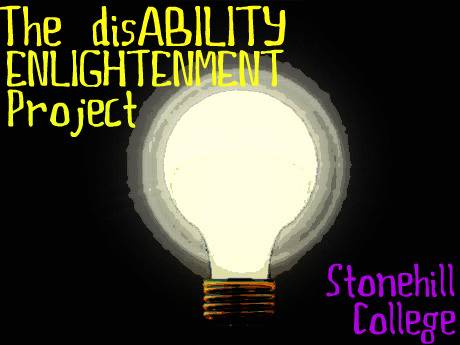
So the other day for my Disability? class I presented on the topic of Politics, Activism, and Disability and I talked about how it is difficult for things to be accomplished politically without a grassroots effort.
Part of my presentation that intrigued me the most was an event that happened in April 1977 regarding Section 504 of the Rehabilitation Act of 1973. According to the Disability Rights Education and Defense Fund (DREDF):
Section 504 of the 1973 Rehabilitation Act was the first disability civil rights law to be enacted in the United States. It prohibits discrimination against people with disabilities in programs that receive federal financial assistance, and set the stage for enactment of the Americans with Disabilities Act. Section 504 works together with the ADA and IDEA to protect children and adults with disabilities from exclusion, and unequal treatment in schools, jobs and the community.
The problem was that although the act had been passed in 1973, by 1977 the government was still not enforcing the legislation, so people all over the country organized sit-ins in Federal offices. The most successful of all of the sit-ins was in San Francisco where over a hundred people occupied the halls of the U.S. Department of Health, Education and Welfare for nearly four weeks until Health and Welfare Secretary Joseph Califano endorsed the regulations.
The thing that shocked me the most about all of this was, why didn't I hear about this before? I didn't even know about this event until I started independently researching it. Why aren't we taught about this movement in elementary school when we talk about all of the other great civil rights movements of our time? One of the books I read described the disability rights movement as the "last civil rights movement." It was a major part of American history, and it baffles me that we do not learn more about it throughout our education.
This was not the only major disability rights movement either. Here are some other major events taken from the disability social history project time line:
1935
A group in New York City called the League for the Physically Handicapped formed to protest discrimination by the Works Progress Administration (WPA). The league's 300 people -- most disabled by polio and cerebral palsy -- all had been turned down for WPA jobs. The Home Relief Bureau of New York City was supposed to forward their job requests to the WPA, but was stamping all their applications 'PH' for physically handicapped, as a signal to the WPA not to give these people jobs. Members of the league sat in at the Home Relief Bureau for nine days; and went to the WPA headquarters and held a weekend sit-in there. They eventually generated a couple thousand jobs nationwide.
1970
Ed Roberts and his peers at Cowell (UC Berkeley Health Center) formed a group called the Rolling Quads.
1974
Disabled Women's Coalition founded at UC Berkeley by Susan Sygall and Deborah Kaplan. Other women involved include Kitty Cone, Corbett O'Toole, and Susan Schapiro. The coalition ran support groups, held disabled women's retreats, wrote for feminist publications, and lectured on women and disability.
1988
"Deaf President Now" protest at Gallaudet University in Washington, D.C. First deaf president at Gallaudet: Dr. I. King Jordan
1988
Greyhound across the nation - ADAPT takes on the inaccessible Greyhound buses.
1990
ADAPT action - Washington DC, Wheels of Justice
What was really cool about this was that persons with disabilities used this opportunity to climb the capitol steps, either leaving their wheelchairs behind or bringing them up the steps with them.
An account by disability rights activist, Michael Winters, describes the event as such:
We started chanting "What do we want?" "ADA!" "When do we want it?" "NOW!" The chants became louder and louder, and ultimately my good friend Monica Hall told me that it was time to get out of my wheelchair and crawl up the steps to the Capitol Building. Monica took my wheelchair, smiled and said, "I'll meet you at the top!" I started to climb step by step towards the top.
At the very beginning, I looked up and thought that I would never make it. But right below me was a seven year old girl who was making the same climb, step by step, her wheelchair left somewhere below or whisked somewhere above. This was Tom Olin's young niece. I felt an obligation to be a role model for this girl and we ultimately made it to the top together.

1990
(26-July-1990) ADA signing ceremony at the White House.
I think there should be a push for education about the disability rights movement, as it is a major part of American history. Who knows? It could have the power to inspire American children, therefore resulting in more civil rights movements in the future so we can aspire to becoming a more just and equal society.

Coming out this month, an amaaaaaazing documentary about this very thing: "Lives Worth Living-- The Great Fight for Disability Rights," a film by Eric Neudel. It was previewed yesterday in Boston, but will be hitting the PBS stations on October 27th, if I'm not mistaken. Check your local one for listings!
ReplyDeleteUR HORRIBLE LOSER
DeleteUR THINGY DIDNT HELP ME AT ALL DO U UNDERSTAND HOW MAD I AM STUPID?1?!?!!?!?!?!!?
ReplyDelete